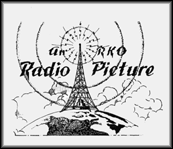I'm a big fan of Waterworld. There's a phrase I use to describe a certain old friend — sheer audacity. Coming from me it is more complimentary than perhaps he realizes.
Costner said one day, "I'm going to build a medieval fortress floating on the sea, and vikings will fly over the walls on jet skis while I drown in a tank of poo. I need one zillion dollars and the Exxon Valdez."
Before that Coppola once said, "I'm going to build a working fishing village in Thailand and then thirty Hueys will blow it up with rockets. ...Can we get Hopper to take every drug?"
In a list of the top ten most audacious film productions...well, they'd all have been staged by Werner Herzog. But further down the list would be names like D.W. Griffith, Cecil B. DeMille, Fritz Lang, David Lean and James Cameron. So many of our movies are timid, domesticated fare. That's why, whether the final product is of highest quality or not, we need the impassioned undertakings of these madmen.
Elizabeth Taylor's Cleopatra (1963) is the most expensive motion picture of all time. It cost slightly more than the third time Johnny Depp pretended to be a pirate. There is a difference between $300 million worth of CGI and $300 million worth of palatial sets, triumphal processions, bejeweled gowns, period costumes for ten thousand extras, full size war galleys, royal barge containing the Metropolitan Opera and wine enough to keep Taylor and Richard Burton on speaking terms. The difference is that I will happily sit through one and not the other. Make no mistake, Cleopatra is not that great a movie (neither is Waterworld), but it is a mind-boggling production. Every dollar spent appears on screen. The experience is not so much like watching a movie as visiting the Grand Canyon: I mean, just look at the fucking size of that thing!
DeMille is perhaps most responsible for the Bigger is Better aesthetic in Hollywood. His 1934 version of Cleopatra, starring Claudette Colbert, set a benchmark for spectacular excess that was not topped until...well, until DeMille made The Ten Commandments. I guess the Queen of the Nile inspires such epics because her tale has all the dramatic earmarks of the Greatest Story Ever Told — Jesus also fancied himself a god who struggled with his kingly obligations and earthly desires and eventually committed suicide — but with lots of sex and better clothes. It's like a burlesque version of the Passion...like the way Alex DeLarge imagines the Bible.
DeMille's film is further enjoyable for being wholly a creature of the early sound era. That is, everyone chatters all the time. Audiences of the day had no patience for solemn intonations that might as well be intertitles; they wanted a spectacle of voice and bubbling, exuberant personality. DeMille delivered a nose-thumbing modern take, very nearly a satire of stuffy historical drama. A typical scene involves cheesecake in leopard skins cartwheeling through hoops of fire. And of course a real leopard chained to every dais. Colbert is flippant and cheeky, a mere girl next to Taylor's goddess of fire and gravity.
There's a terrific, unintended laugh at the end. Both actresses must have been afraid of snakes: Taylor merely slips her hand into the basket to be bitten by something unseen. Colbert to her credit reaches into the basket to bring the serpent to her breast, but pulls out what looks like an especially large worm.
Okay, I have not been completely honest. There is an even more expensive movie out there...a leviathan I tremble even to mention. From 1961 to 1968 the Soviets produced a film adaptation of War and Peace. The Russian-language version clocks in at over 8 hours and estimated cost almost triple Cleopatra. Mr President, we must not allow a cinema gap!
Tuesday, April 21, 2009
Subscribe to:
Post Comments (Atom)

Penn Jillette's friend, on Kane: "I don't want to watch one man's ego trip."
ReplyDeletePenn Jillette: "I don't want to watch anything else."